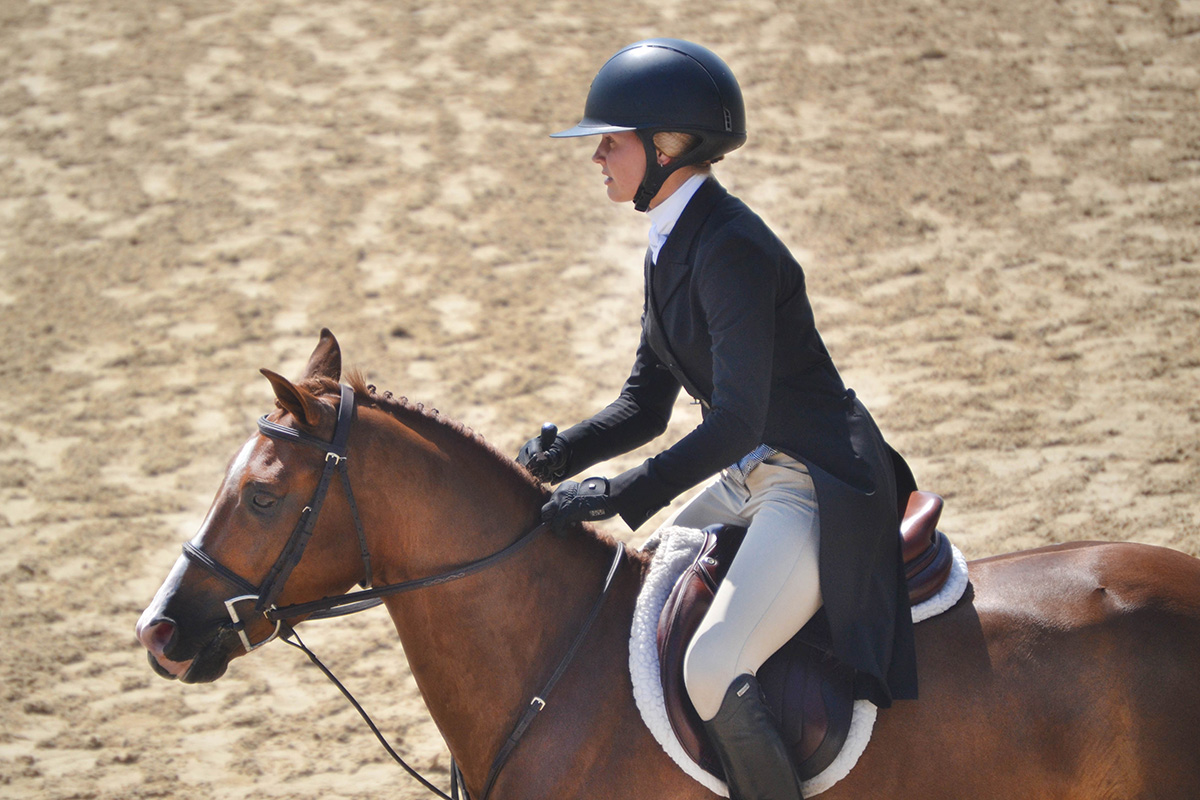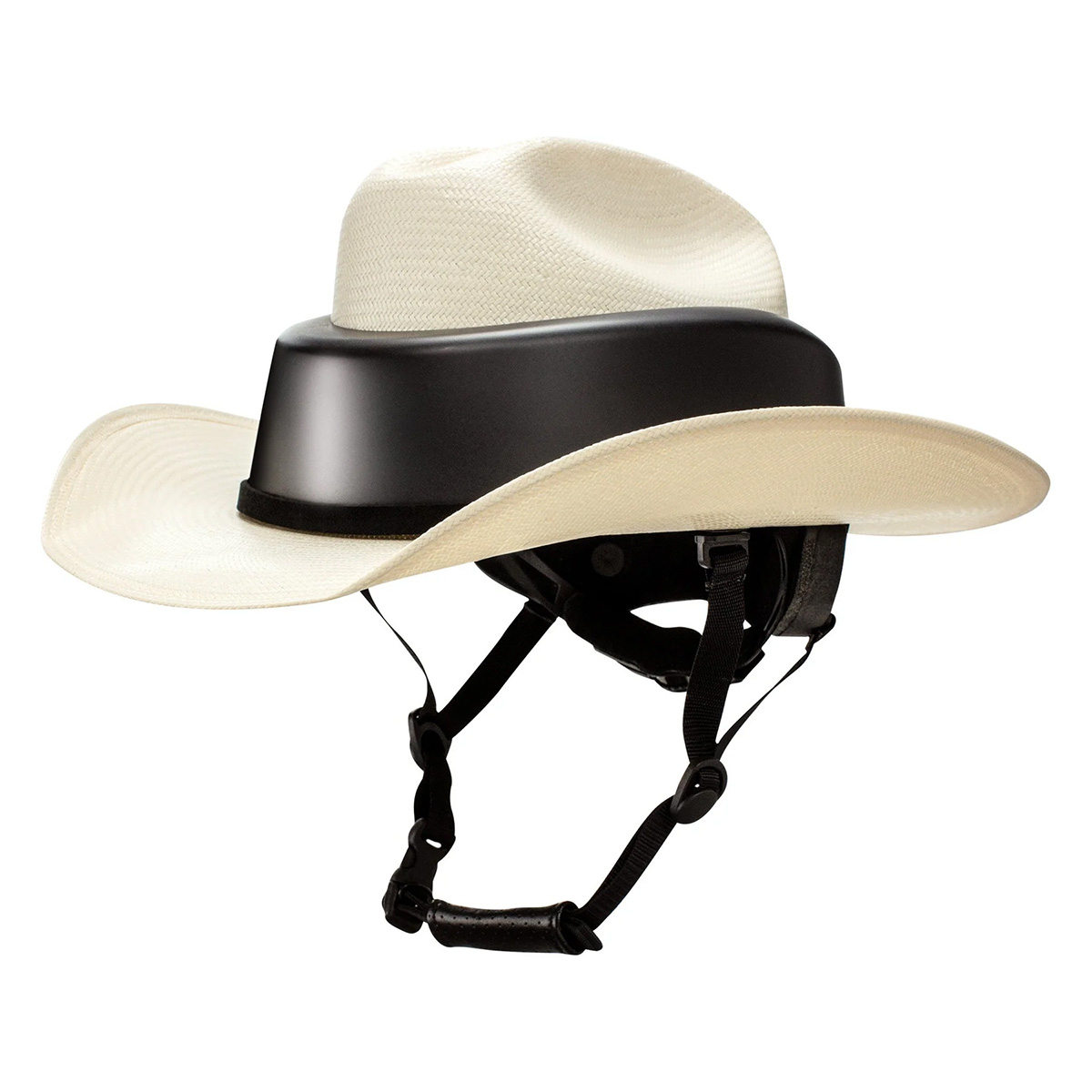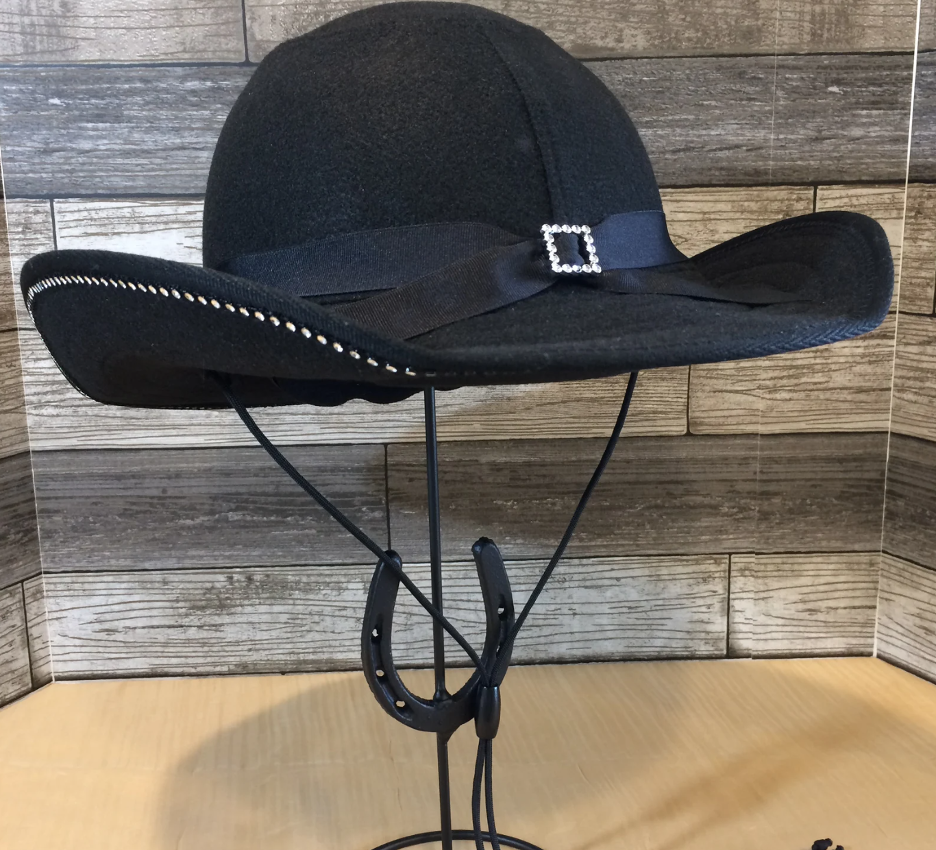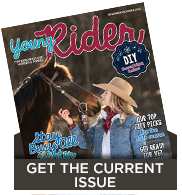Read along for a guide on how to choose your riding helmet for safely riding a horse.

Being a horse girl or guy pretty much guarantees you’ll end up eating some dirt at some point. If you haven’t had the joy of hitting the ground yet, count yourself lucky. Even the most easygoing horses can spook or pull a surprise move, and suddenly you’re airborne. Whatever you land on first takes the impact of your fall. Hopefully, that thing isn’t your head.
Working with horses is fun, but it’s not without risks. That’s why it’s so important to gear up and protect yourself. Wearing a helmet when you ride is an absolute must. According to the University of Connecticut, around 70,000 people end up in the emergency room each year because of horse-related activities. And sadly, 60% of horse-related deaths are caused by head injuries. So, safety first, always!
How to Choose a Helmet for Riding Horses
Not all riding helmets are created equal. The first thing you need to look for are American Society for Testing and Materials (ASTM) and/or Safety Equipment Institute (SEI) certifications. This means that the helmet passed safety and quality tests. If the helmet doesn’t offer ASTM/SEI certifications, it’s just for looks and won’t protect your head much.
The next thing to think about is how well the helmet fits. It’s a good idea to head over to the tack store to get properly fitted. Heads come in all shapes and sizes, and so do helmets, so finding the right fit is important.
If you don’t have a tack store nearby or prefer to shop online, you can measure the circumference of your head using a measuring tape. No tape? No problem. You can use a piece of string instead, wrap it around your head about an inch above your eyebrows, and then measure the string with a ruler or yardstick.
Once you’ve got your measurements, it’s time to try on some riding helmets. See which one feels the most comfortable. It should fit snugly — not too loose that it moves around, but also not so tight that it leaves a mark on your head. Make sure to secure the chinstrap snugly under your chin, and check for any pressure points.
It’s all about finding the perfect fit to keep you safe and comfortable while you’re riding.
What Riding Helmets Should I Avoid?
If you are heading to your first horseback riding lesson, you might consider using your bicycle helmet. Sure, bike helmets are great for those low-to-the-ground spills, but they’re not quite beefy enough to handle a tumble from a horse. Most trainers will have extra riding helmets for first-timers so be sure to ask before you go.
It might also be tempting to pick up a used helmet at a garage sale or borrow one from a friend who has outgrown theirs. But here’s the deal: if a helmet has ever suffered an impact, its safety has been compromised and it’s best to toss it out. The layer that gives you the most protection is deep inside the helmet and you can’t see it from the outside. This layer is called Expanded Polystyrene (EPS), which is like microscopic bubble wrap. If you suffer a fall, the bubbles pop, absorbing the impact of the fall. So, even if you don’t see a crack on your helmet, you should purchase a new helmet before riding again. Riding helmets also have an expiration date of five years from the date of purchase. After five years, the materials can become brittle and worn, rendering the helmet less effective. Using an old one means rolling the dice on its safety if it’s past its prime.
I’m Riding Western, I Need to Wear a Cowboy Hat
In English disciplines, wearing a helmet is part of the uniform, but when you step into the western show ring, it’s all about the classic cowboy hat vibe. However, the trend is shifting a bit in the States. 4-H programs and saddle clubs are hopping on the helmet train, making them a must-have for riders. Even some of the professional competitions have seen the importance of helmets. Bronc riders, barrel racers, and reiners can all choose between a hat or a helmet.
One helmet manufacturer identified the need for a stylish cowboy hat that also protects a rider’s head. They created a cowboy hat that doubles as a helmet, called the Resistol RideSafe Western Cowboy Hat Helmet. It’s fashionable, protective, and sure, it’s a bit pricier at $179.99, but it’s hard to spot the difference between it and a regular cowboy hat.

Now, if you’re not into the whole hat-helmet hybrid thing, fear not. There are crafty sellers on Etsy who can jazz up your standard helmet with custom brims. So, you can still rock that western look with a personalized touch.

Your noggin is kind of a big deal—it’s the command center for your whole life! So, you’ve got to treat it right. That means safeguarding it whenever you saddle up. So, don’t skimp on safety. Protect what matters most—your brain and your life. Pop on that riding helmet and go get on your high horse.
This article about how to choose a riding helmet is a web exclusive for Young Rider magazine. Click here to subscribe!


